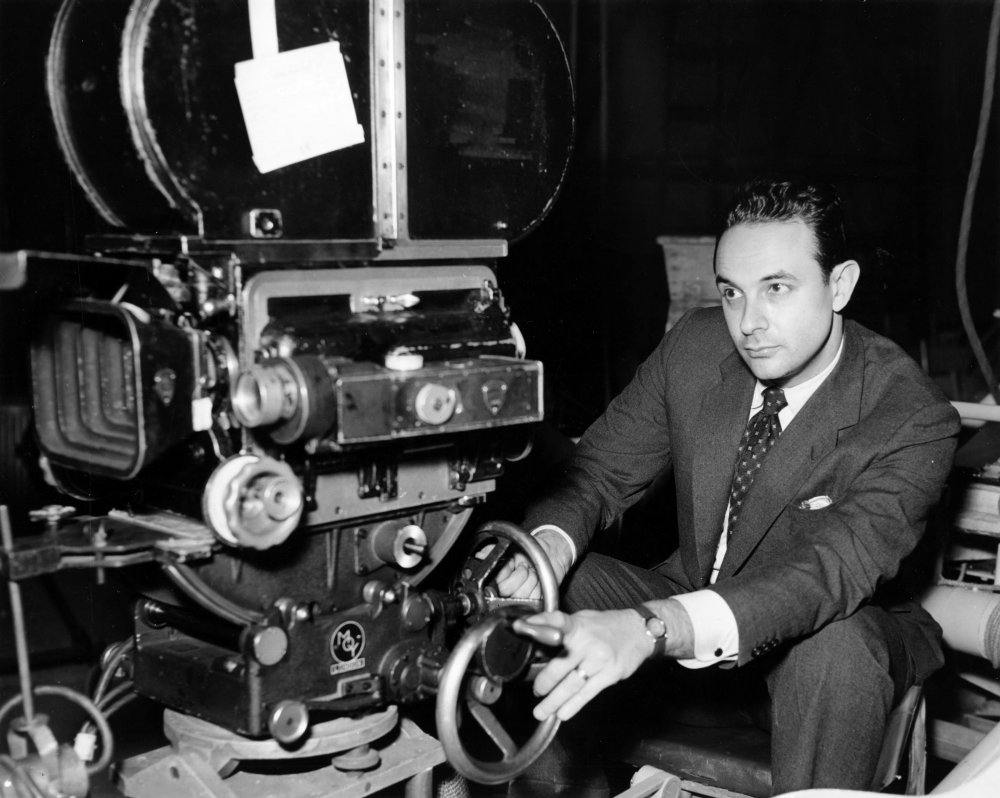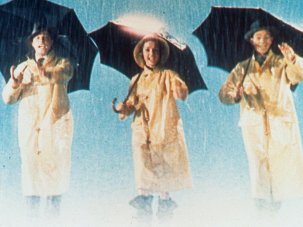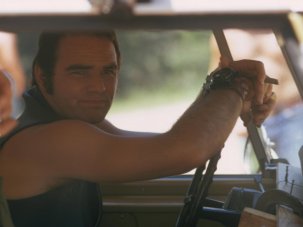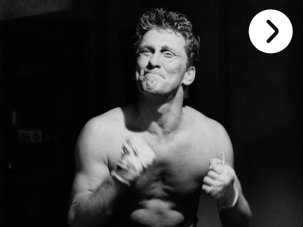Few things are more ironic than the death of director Stanley Donen on the eve of the weekend on which the Academy Awards telecast came close to omitting the prizes for cinematography, editing, makeup and live-action short film.
Of course, Donen, who was 94, was not a cinematographer, editor, make-up man or maker of short films, but he was the recipient of an honorary Oscar – the live presentation of which has been absent from the telecast since 2010.
In 1998, however, Donen – a native of South Carolina – was given his prize on live TV. You probably remember it: Martin Scorsese emerged from the wings of the stage to tell the audience “a story with a happy ending”: Scorsese spoke of a boy bewitched by movie musicals who, through sheer force of will, made a career for himself as a choreographer, first on Broadway and then in Hollywood.
The highlight reel consisted of clips from one Donen classic after another, including Singin’ in the Rain (1952), Funny Face (1957), Charade (1963) and Two for the Road (1967). Then Donen – a balding, bespectacled man who called to mind an accountant – gave an unexpectedly rousing speech, gamely acknowledging the assorted actors, writers and composers with whom he had worked and gracefully tap-tap-tapping his shoes to the tune of Cheek to Cheek.
Stanley Donen Receives an Honorary Award: 1997 Oscars
Since honorary Oscars are now dispensed during an untelevised ceremony, need I mention that Donen’s speech, if given today, would go largely unseen? As Slate writer Matthew Dessem pointed out on the news of Donen’s death: “If Stanley Donen received his lifetime achievement award this year, the Oscars audience would only know about it from a brief clip from the Governors Awards.” Put another way, old-timers like Donen cannot surprise us if they are denied a stage.
Yet Dessem got one big thing wrong in his appraisal of Donen’s speech: he describes the director’s tribute to his collaborators as a rebuke of auteurism. In fact, the opposite is true. Yes, Donen singled out the likes of Cary Grant, Audrey Hepburn, Fred Astaire and Gene Kelly, but he did so not as an emissary of the Golden Age. Instead, he sounded like the same star-struck boy described by Scorsese. For starters, Donen was younger than many of his colleagues: among directors who made specialties of musicals, Vincente Minnelli was born in 1903, Charles Walters in 1911 and George Sidney in 1916.
Donen’s films, then, have a touch of self-consciousness – like a photograph of a photograph, they are a generation removed from the genuine article. Consider the way Fred Astaire comments on the action of the final scene in Royal Wedding (1951), when – having just gotten married inside a church – he steps outside, sees the crowds that have turned out for an actual royal wedding, and jokes: “They didn’t have to go to all this trouble. A small wedding would have been all right!” In Charade, too, Cary Grant and Audrey Hepburn behave as though they might be aware of a man called Alfred Hitchcock, and that the plot they find themselves wrapped up in could be material for one of his movies. Hmm…
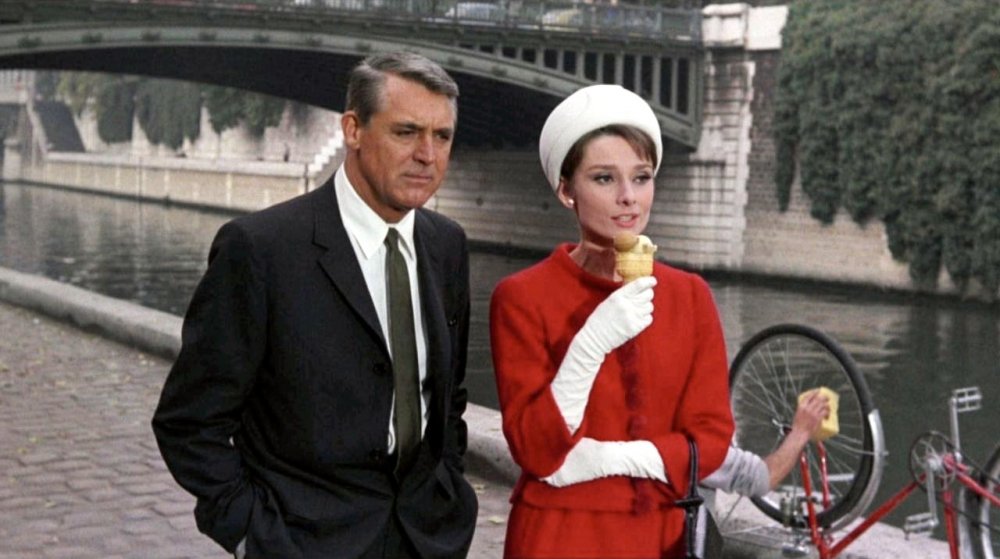
Charade (1963)
In this way, Donen was a precursor to Peter Bogdanovich: both borrowed the infrastructure of classic movies and provided a much-needed spit and polish. Donen, like Bogdanovich, was making something akin to fan art. When Jean Negulesco directed Fred Astaire in Daddy Long Legs (1955), he was directing a contemporary; when Donen directed Astaire in Royal Wedding and Funny Face, he was sitting at the feet of a hero.
Donen also rejected the workman-like proficiency of old-guard directors. His films were brighter, breezier, faster and fleeter than theirs – as though, while watching Astaire as a kid, he imagined how he might use Astaire differently, and better, than, say, Mark Sandrich. Reviewing Movie Movie (1978), Dave Kehr observed: “Donen created an alternative to [Busby] Berkeley’s massive, impersonal production numbers, forging a new style out of intimate duets and outdoor ensemble work that breathed in the freedom of fresh air.”
Even sets, though, did not dampen Donen’s imagination. For example, during the title number in Singin’ in the Rain, Gene Kelly gets all the attention for his acrobatics on the dark-and-rainy stage, but just look at Donen’s camera as it adjusts to him, swaying and swooping in the process. By contrast, an earlier Kelly film like Cover Girl (1944) looks stultifyingly stage-bound – except, that is, for the ‘alter-ego dance’ he concocted with Donen (then a choreographer). In Seven Brides for Seven Brothers (1954), the barn-raising dance is staged with such vim and vigor that we forget about the backdrop meant to stand in for the Pacific Northwest. Forget the fake trees – those gals in pastel-colored dresses might as well be Gene Kelly, as far as Donen’s camera is concerned.
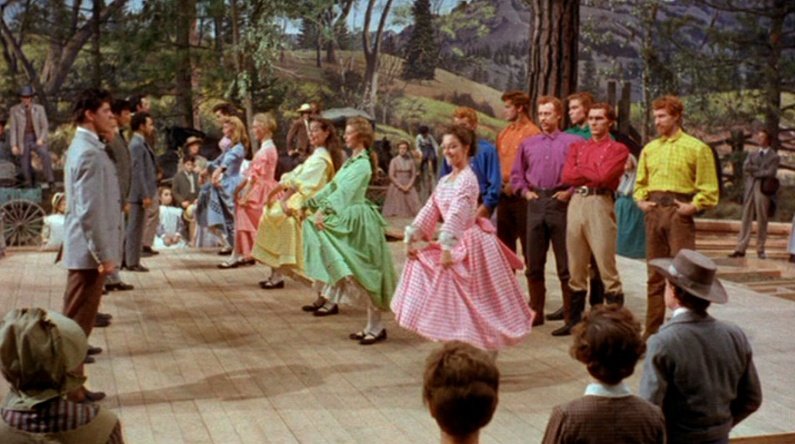
Seven Brides for Seven Brothers (1954)
Of course, Donen was saddled with Kelly as a co-director on Singin’ in the Rain, On the Town (1949) and It’s Always Fair Weather (1955), but the work of each man independent of the other helps clarify who was the cinematic mastermind on that formidable trilogy. Donen’s solo films suggest that he was capable of directing without an extra man on hand to yell ‘action’, while Kelly’s solo films – including such wan efforts as The Happy Road (1958) and A Guide for the Married Man (1967) – demonstrate no particular aptitude for mise-en-scène. In The American Cinema, Andrew Sarris decisively split up the duo, assigning Donen to Expressive Esoterica and consigning Kelly to Oddities, One-Shots and Newcomers. “The charm and brilliance of Gene Kelly’s dancing has not carried over to his direction since the dissolution of his partnership with Donen,” Sarris wrote.
In the late 1950s, perhaps out of a desire to demonstrate that his talent did not depend upon Kelly, Donen went into overdrive, directing a series of dazzling comedies, encompassing the intimate on-screen bond between Cary Grant and Ingrid Bergman in the justly celebrated Indiscreet (1958) and the hysterical bantering of Yul Brynner and Kay Kendall in the underrated Once More, With Feeling! (1960). At some point, Donen’s on-screen credit started to be accompanied by a logo – a circle within a square that seemed to stand for all things stylish. Donen was still willing to try anything, from the jumbled narrative of Two for the Road to the mock double-feature of Movie Movie, though more memorable than such gimmicks was his gift for coaxing humane performances. In Charade, Donen treated bad guys Walter Matthau and James Coburn like bungling farceurs more than real heavies, and in Two for the Road he performed the neat trick of taming the fearsome intensity of Albert Finney and bringing down to earth the ethereal effervescence of Audrey Hepburn.
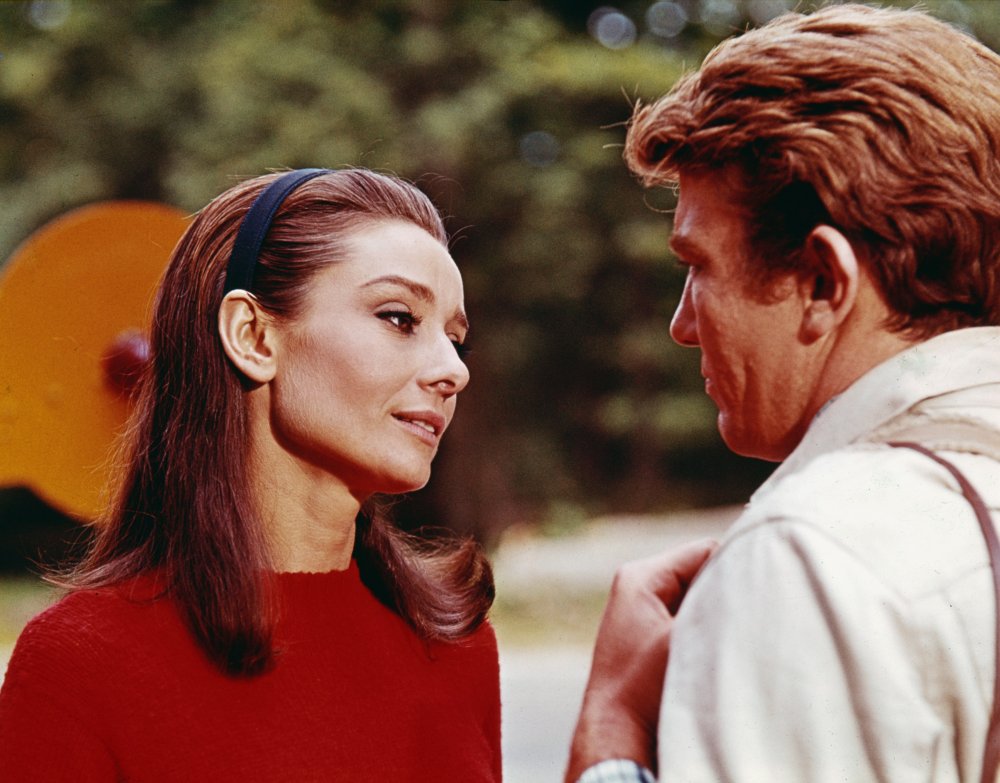
Audrey Hepburn with Albert Finney in Two for the Road (1967)
In the end, Donen did not need Kelly, but he did require dependable genres and grade-A stars. In the 1970s and 80s, with such elements in short supply, Donen put up a good fight for a while – in The Little Prince (1974) he made one of the best post-Darling Lili musicals, and in Lucky Lady (1975) he concocted some chemistry between Burt Reynolds, Gene Hackman and Liza Minnelli – but he must have recognized that his time had passed. Donen’s final theatrical features, Saturn 3 (1980) and Blame It on Rio (1984), are watchable thanks only to his classy style.
About a year after he wowed with his Oscar speech, he directed one last time: the tele-pic Love Letters – based on a play by A.R. Gurney – played on ABC in the spring of 1999. Leads Steven Weber and Laura Linney were far from the stars of days gone by, but they did the best they could – and Donen directed with confidence. Along with Scorsese, he served as ‘presenter’ of Kenneth Branagh’s Shakespeare musical Love’s Labour’s Lost (2000), shot with admirable sheen by the late cinematographer Alex Thomson. An honorary Donen picture, perhaps?
Thereafter, Donen fell silent, preferring to revive memories of his old work rather than make new. Yet isn’t that exactly what he did on Oscar night 21 years ago, when he honored Cary, Audrey, Fred and Gene?
-
The Digital Edition and Archive quick link
Log in here to your digital edition and archive subscription, take a look at the packages on offer and buy a subscription.




